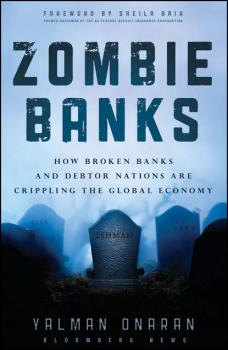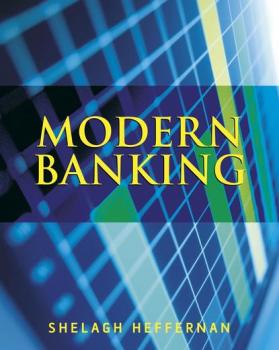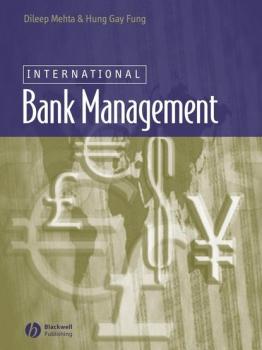ТОП просматриваемых книг сайта:















Банковское дело
Различные книги в жанре Банковское дело, доступные для чтения и скачиванияАннотация
An essential framework for wealth management using behavioral finance Behavioral Finance for Private Banking provides a complete framework for wealth management tailored to the unique needs of each client. Merging behavioral finance with private banking, this framework helps you gain a greater understanding of your client’s wants, needs, and perspectives to streamline the decision making process. Beginning with the theoretical foundations of investment decision making and behavioral biases, the discussion delves into cultural differences in global business and asset allocation over the life cycle of the investment to help you construct a wealth management strategy catered to each individual’s needs. This new second edition has been updated to include coverage of fintech and neurofinance, an extension of behavioral finance that is beginning to gain traction in the private banking space. Working closely with clients entails deep interpersonal give and take. To be successful, private banking professionals must be as well-versed in behavioral psychology as they are in finance; this intersection is the heart of behavioral finance, and this book provides essential knowledge that can help you better serve your clients’ needs. Understand the internal dialogue at work when investment decisions are made Overcome the most common behavioral biases—and watch for your own Learn how fintech and neurofinance impact all aspects of private banking Set up a structured wealth management process that places the client’s needs front and center Private banking clients demand more than just financial expertise. They want an advisor who truly understands their needs, and can develop and execute the kind of strategy that will help them achieve their goals. Behavioral Finance for Private Banking provides a complete framework alongside insightful discussion to help you become the solution your clients seek.
Аннотация
Strategic technology strategy for smaller financial institutions Breaking Digital Gridlock empowers credit unions and community banks to make the shift to digital—even without a seven-figure consulting budget. From leadership, to technology, to security, and more, this book provides effective, real-world strategies for taking the leap without tearing your organization apart. With an emphasis on maintaining the culture, services, and features you have carefully crafted for your customers over the years, these strategies allow you to make your organization more resistant to digital disruption by adopting key technologies at key points in their evolution. Expert advice grounded in practicality shows how FinTech partnerships and strategic technology acquisition can foster new growth with minimal disruption, and how project management can be restructured to most effectively implement any digital solution and how to implement and leverage analytics. Specific implementation advice coupled with expert approaches offer the ability to modernize in an efficient, organized, financially-sound manner. The companion website features a digital readiness assessment that helps clarify the breadth and scope of the change, and serves as a progress check every step of the way. Access to digital assets helps smooth the path to implementation, and a reader forum facilitates the exchange of ideas, experiences, and advice. Identify revolutionary versus evolutionary technology opportunities Empower employee innovation, and stop managing all risk out of good ideas Understand blockchain, machine learning, cloud computing, and other technologies Forge strategic partnerships that will drive growth and success amidst technological upheaval It is widely accepted that digital is the future of banking, but knowing is not the same as doing. If your organization has been riding the fence for too long amidst uncertainty and budget constraints, Breaking Digital Gridlock provides the solutions, strategies, and knowledge you need to begin moving forward.
Аннотация
As the population ages, which nation will rise to lead innovation in the future? Demographics of Innovation takes a deep, investigative look at the link between economic growth, innovation, vitality and entrepreneurship in an aging population, and provides smart strategy for the future. Written by a Stanford-trained economist and demographics expert, who is also a prominent internet entrepreneur, this book examines demographic trends across nations and digs into the divergence to find awakening innovation. An aging population hampers growth; while many are focused on the care-related financial burden, few have fully explored the ways in which a seismic demographic shift could transform the face of global business. This book charts the trends, connects the dots and reveals which nations will be best placed to build an innovation economy and grow in the future. Global business is set to undergo a revolution as aging populations mired in old thinking become left behind by younger, brighter, more forward-looking generations. Innovation loss is the first step in stagnation, so the question becomes: who will win and who will lose in this new world order? This book presents clear analysis of the coming demographic bomb, and proposes insightful strategy for the short and long term. Delve into the aging of society and the economic issues it creates Learn how shifting demographics affects innovation and prosperity Examine trends in growth, policy and more alongside the rise in average age Make smarter planning decisions in light of the changing population The problems of overpopulation pale in comparison to the problem of aging on a massive global scale. Demographics dictate growth rates, economic equilibrium, interest rates and so much more. Demographics of Innovation provides thought-provoking analysis and strategy for policy makers, business leaders, investors, entrepreneurs and everyone concerned about planning for an uncertain future.
Аннотация
An in-depth look at the problems surrounding zombie banks and their dangerous effect on the global economy “The title is worthy of a B movie, but it's also apt. Bloomberg News reporter Yalman Onaran, supported by former U.S. Federal Deposit Insurance Corp. chief Sheila Bair – who provides a foreword and numerous interviews – urge that insolvent banks both small and too big to fail be allowed to do precisely that. Reading bank balance sheets is not everyone's idea of a good time. But Mr. Onaran, with support from Ms. Bair, does the chore and explains what it means. Mr. Onaran shows that the process of rescuing dead and dying banks is increasing systemic risk in the global banking system. And that is really more frightening than scream flicks from Tinseltown.” – Financial Post “Yalman Onaran knows of putrid financial institutions, having written about them in his native Turkey so successfully he brought down a few in Istanbul in the late '90's.” – Huffington Post “Do We Love Zombie Banks? The new book by Yalman Onaran of Bloomberg News, Zombie Banks: How Broken Banks and Debtor Nations Are Crippling the Global Economy, is a well-organized and clearly written discussion of the use of leverage to provide growth in many different economies. Onaran has carefully researched the zombie phenomenon and makes some important points in this concise volume about both public policy and the concerns of investors. One of the more interesting early threads in the book is the juxtaposition of the experience of the US in the S&L crisis and Japan in the 1980s and 1990s with the US today. Zombie Banks is a good review of the latest thinking about the ebb and flow of the political economy.” – R. Christopher Whalen, author of Inflated Zombie banking has become standard operating procedure for big debtor nations. They prop up failing institutions, print money, and avoid financial corrections. But in an attempt to prolong the inevitable, bigger problems are created. The approach used now has not, and will not, work. This timely book reveals why. Zombie Banks tells the story of how debtor nations and failing institutions are damaging the long-term prospects of the global economy. Author Yalman Onaran, a veteran Bloomberg News reporter and financial banking sector expert, examines exactly what a zombie bank is and why they are kept alive. He also discusses how they hurt economic recovery and what needs to be done in order to restore stability. Along the way, Onaran takes an honest look at how we arrived at this point and details the harsh realities that must be faced, and the serious steps that must be taken, in order to get things headed in the right direction. Puts insolvent banks and debtor nations in the spotlight and examines how they are crippling the global economy On the record sources include Paul Volcker, Joseph Stiglitz, Sheila Bair, and many more bank executives, regulators, politicians, and policymakers in the United States and abroad Takes the complexity of the current situation and translates it in a way that makes it understandable While the short-term measures taken to stave off depression and rejuvenate economic growth may offer hope, they are unsustainable over the long term. Get a better look at what really lies ahead, and what it will take to improve our economic situation, with this book.
Аннотация
Modern Banking focuses on the theory and practice of banking, and its prospects in the new millennium. The book is written for courses in banking and finance at Masters/MBA level, or undergraduate degrees specialising in this area. Bank practitioners wishing to deepen and broaden their understanding of banking issues may also be attracted to this book. While they often have exceptional and detailed knowledge of the areas they have worked in, busy bankers may be all too unaware of the key broader issues. Consider the fundamental questions: What is unique about a bank? and What differentiates it from other financial institutions? Answering these questions begins to show how banks should evolve and adapt – or fail. If bankers know the underlying reasons for why profitable banks exist, it will help them to devise strategies for sustained growth. Modern Banking concludes with a set of case studies that give practical insight into the key issues covered in the book: The core banking functions Different types of banks and diversification of bank activities Risk management: issues and techniques Global regulation: Basel 1 and Basel 2. Bank regulation in the UK, US, EU, and Japan Banking in emerging markets Bank failure and financial crises Competitive issues, from cost efficiency to mergers and acquisitions Case Studies including: Goldman Sachs, Bankers Trust/Deutsche Bank, Sumitomo Mitsui, Bancomer
Аннотация
This text provides current and integrated coverage of the important topics in international banking, including foreign exchange markets, derivatives, country risk analysis, asset-liability management, and banking strategies. In order to incorporate the central elements of this field, the text builds on a three-faceted foundation of risk-return tradeoff, the special barriers encountered in international business, and the unique features of banking business. By responding to the increasing globalization of financial markets, this text offers readers the comprehensive, international background they need to prepare for a successful career in banking. Provides current and integrated coverage of international bank management. Incorporates analytical frameworks and real-world examples of key decision-making processes. Includes learning objectives and end-of-chapter review questions.
Аннотация
A practical primer to the modern banking operation Introduction to Banking, Second Edition is a comprehensive and jargon-free guide to the banking operation. Written at the foundational level, this book provides a broad overview of banking to give you an all-around understanding that allows you to put your specialty work into context within the larger picture of your organization. With a specific focus on risk components, this second edition covers all key elements with new chapters on reputational risk, credit risk, stress testing and customer service, including an updated chapter on sustainability. Practical material includes important topics such as the yield curve, trading and hedging, asset liability management, loan origination, product marketing, reputational risk and regulatory capital. This book gives you the context you need to understand how modern banks are run, and the key points operation at all levels. Learn the critical elements of a well-structured banking operation Examine the risk components inherent in banking Understand operational topics including sustainability and stress testing Explore service-end areas including product marketing and customer service Banks continue to be the heart of the modern economy, despite the global financial crisis —they have however become more complex. Multiple layers and a myriad of functions contribute to the running of today's banks, and it's critical for new and aspiring bankers to understand the full breadth of the operation and where their work fits in. Introduction to Banking, Second Edition provides an accessible yet complete primer, with emphasis on the areas that have become central to sustainable banking operation.
Аннотация
Within Europe, the banking sector is commencing a period of considerable change and consolidation. Advances in technology, competition from the non-banking sector, the introduction of the Euro, a European Central bank and, possibly, pan-European Regulation, combined with the challenge from US banks, increased mergers and changing practices means 21st century banking is changing immeasurably. The Future of Retail Banking in Europe is written in an accessible style by Oonagh McDonald and Kevin Keasey, two of the leading authorities in the field and includes: In-depth analysis of the banking structures in all the major European markets. Foreword by Guy Warren, Head of Banking, Europe, Unisys Corporation Unique insights into the industry from the CEOs of major European banks. The challenges being faced in the industry and predictions into what the future holds for retail banking in Europe. This book will be essential reading for middle and senior managers in the banking and financial service sectors, both suppliers and investors in the banking sector, and MBA students.
Аннотация
This new book on retail banking is both readable and innovative. Its analysis is unusually accessible in its style, and the book's conclusions and predictions will be rightly thought provoking. The customer is gaining real power and this new book's insights on the importance of leadership, the need to unleash creativity and to make a bank's IT and people resource work together more effectively for customer satisfaction are important pointers to the shape of future competitive differentiation. –Sir Mervyn Pedelty, Recently retired Chief Executive, The Co-operative Bank plc, smile, CIS and Co-operative Financial Services «A stimulating read. A readable and lively book that is always informative, sometimes controversial and invariably challenging. The authors don't expect readers to agree with it all, but the readers will undoubtedly gain some fresh insights and perspectives on the multiple issues facing management in a rapidly changing industry.» –Chris Lendrum CBE, Recently retired Vice Chairman, Barclays Bank «This book is clear enough for the layman and thorough enough for any banker to obtain an excellent sense of the options for successful strategies for their retail businesses. The challenges of technology introduction, cost of production and scope of service are driving banks into responses increasingly similar to other industry sectors. These forces have been apparent for some years but are so evident now they can no longer be ignored. This book provides an excellent guide to mapping that future.» –Joseph DeFeo, CEO, CLS Bank. «This is a useful guide to retail banking that provides a thought-provoking view on the state of The Art (of Better Retail Banking). Clearly retail banking can get better, and must! To steal an analogy from the conclusion, there is a sea change going on – consumers are looking more and more for greater simplicity and value, and so many banks are still making such heavy weather of it. This book does a good job of charting the current developments.» – Lindsay Sinclair, CEO, ING Direct UK. «A whistle-stop tour of all aspects of retail banking. This is a very readable and insightful real world mix of theory, strategy, tactics and practice. They have even managed to make banking sound exciting. But mostly they have been able to cut through the complexity to remind us all that success in retail banking is not just about finance and efficiency – it is about customers and staff, who are all too often forgotten about.» –Craig Shannon, Executive Director – Marketing, Co-operative Financial Services. «The authors live up to their promise of providing managers and students with a clear exposition of the retail banking sector and how banks can confront the challenging future they face. This book is a practical manual with lots of useful advice. I was looking for new insights in this book – and I found them!» –Professor Adrian Payne, Professor of Services Marketing, Director, Centre for Services Management, Cranfield School of Management. «A key determinant of any organisation's success will be an enhanced understanding of 'value' as defined by customers, employees, shareholders and other stakeholders. Value can mean different things to these different groups, and this book has set itself the objective of identifying the approaches that will improve the value proposition for all of these interested parties. It achieves this objective.» –Professor Steve Worthington, Faculty of Business and Economics, Monash University. "An enjoyable and useful read. It provides a good perspective on the role of IT and how IT suppliers and professionals need to contribute to future developments in retail banking strategy and implementation. It helps provide guidance for the significant challenges ahead for both suppl










